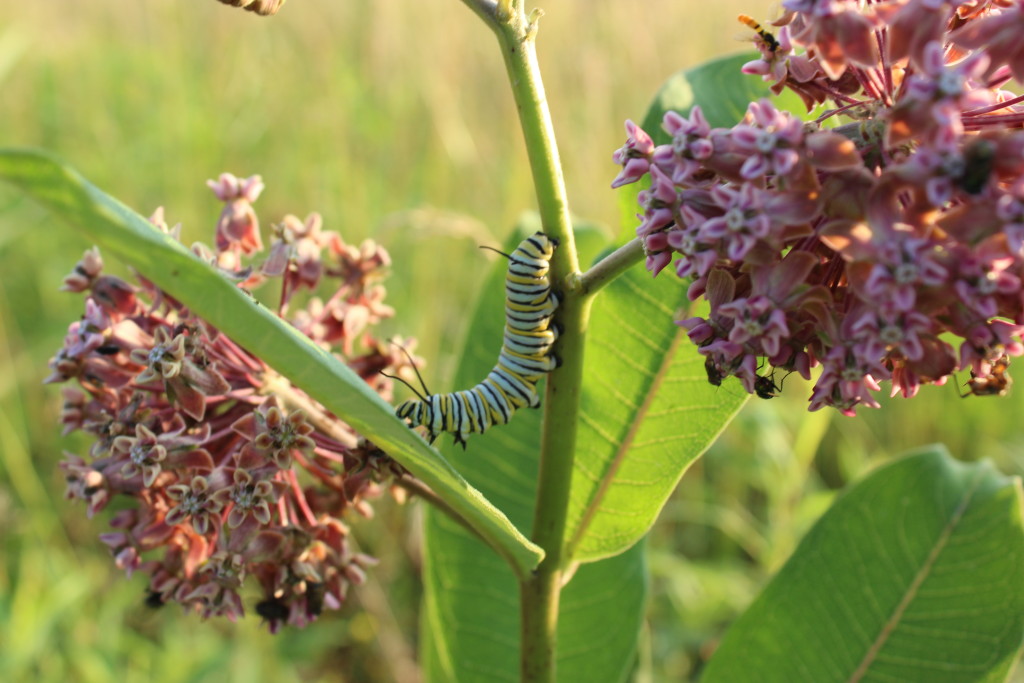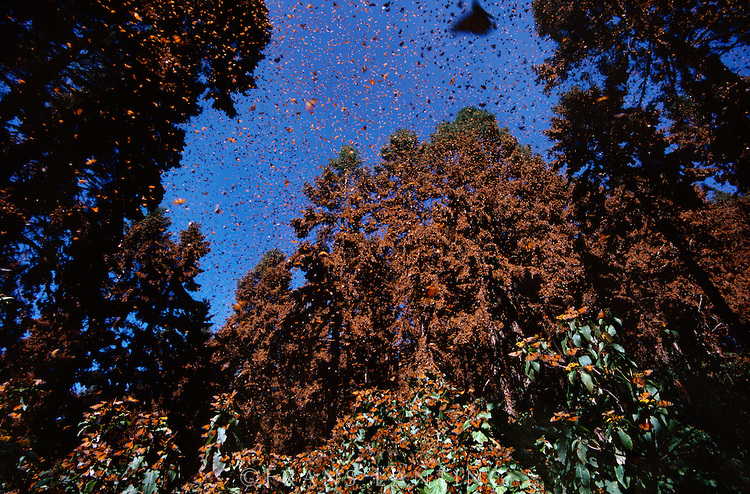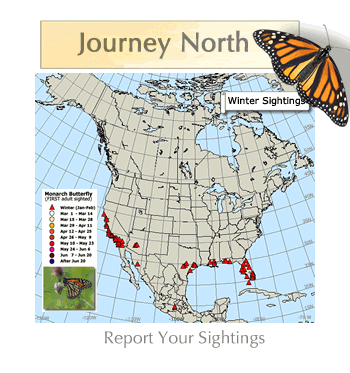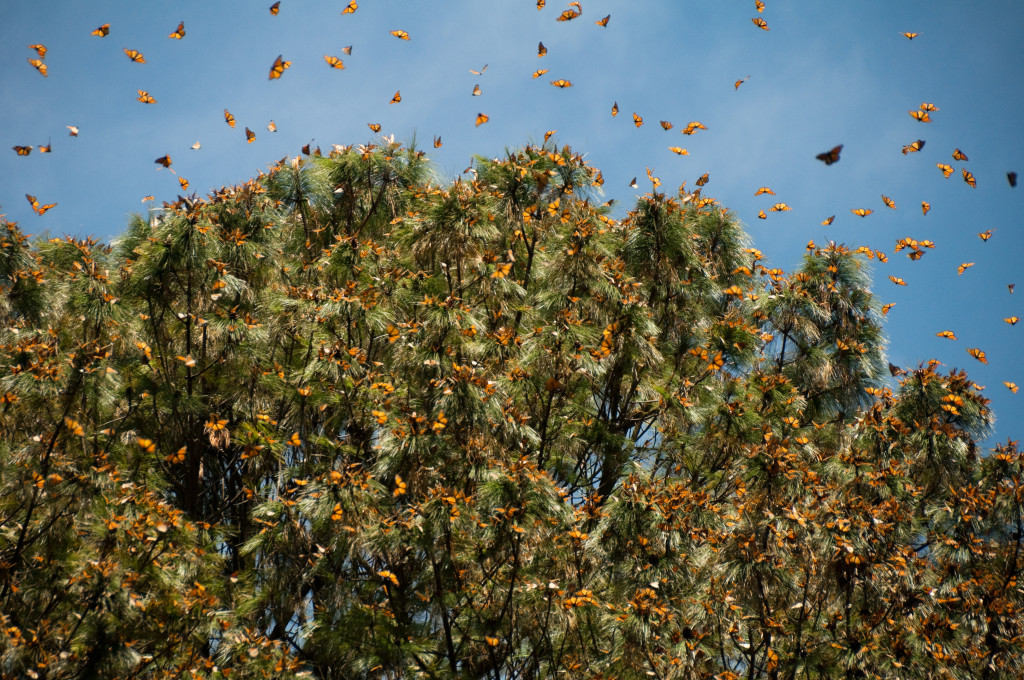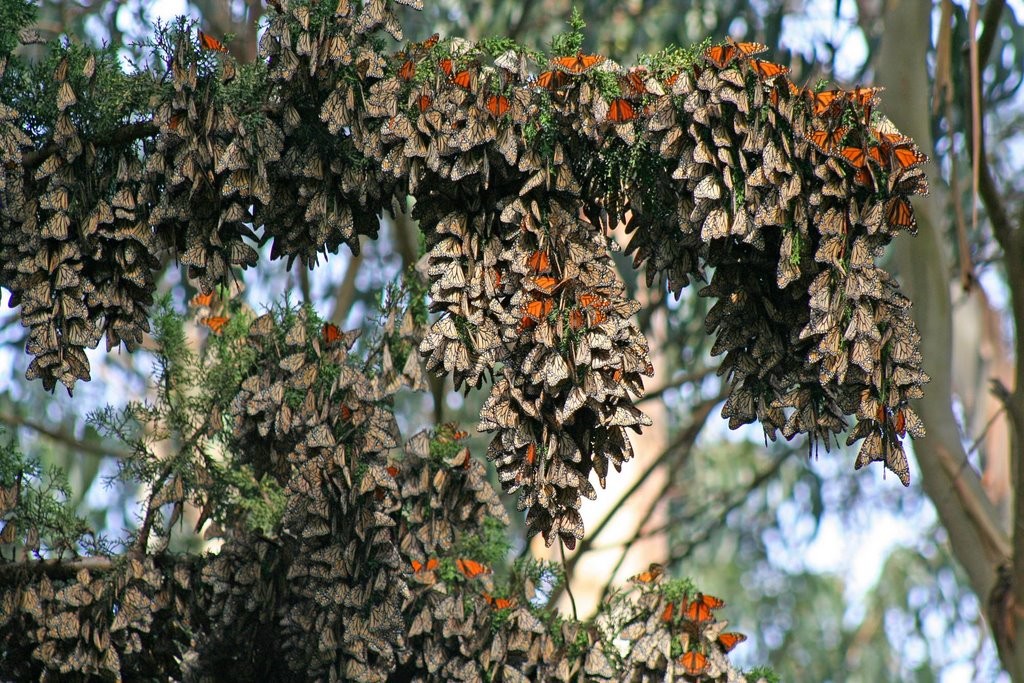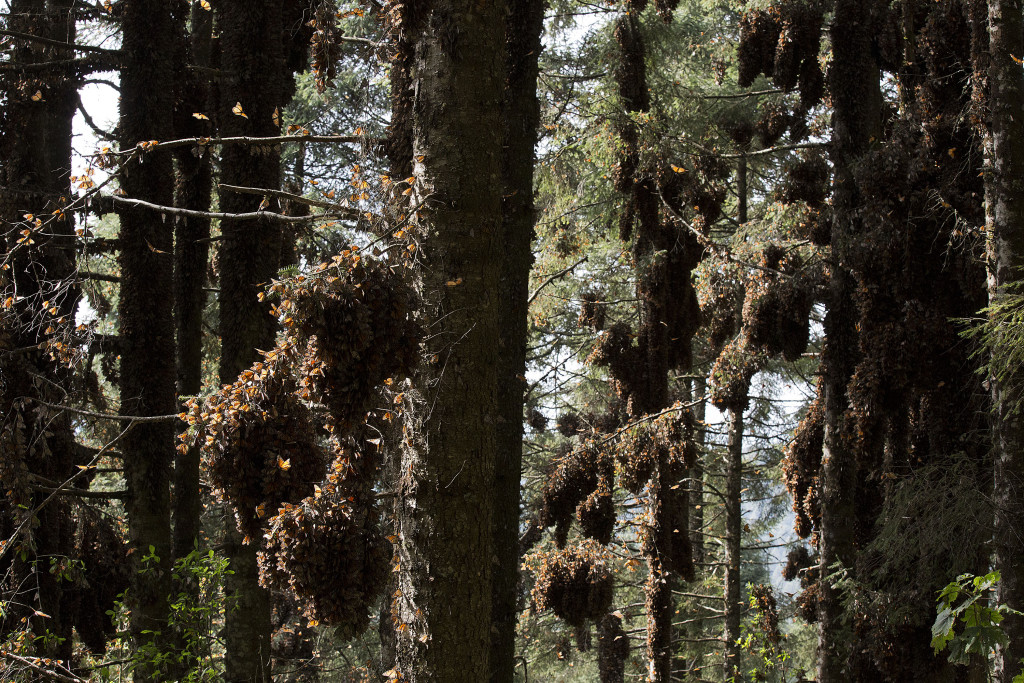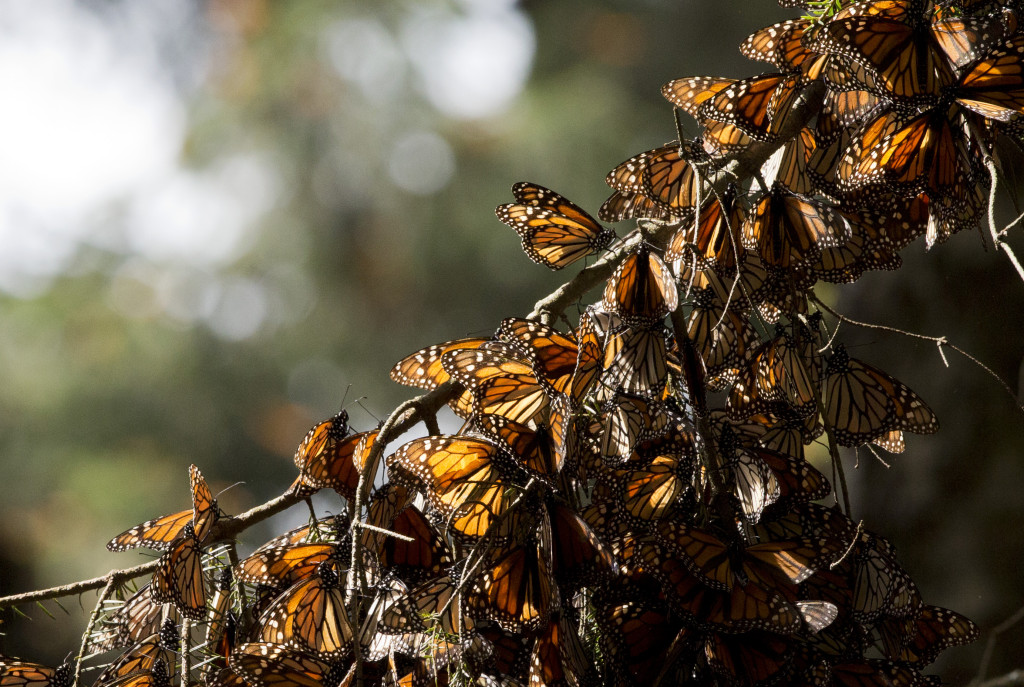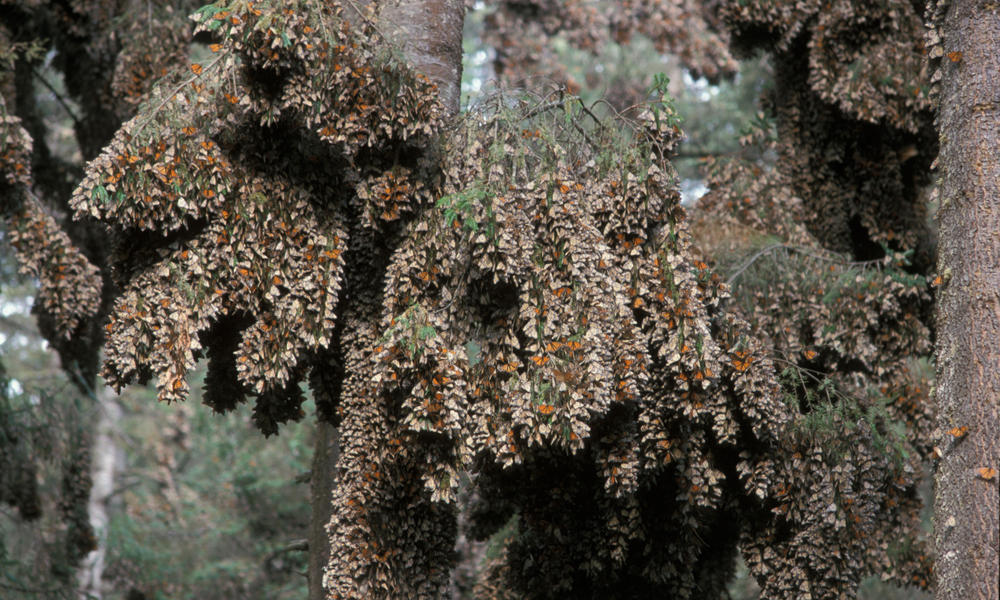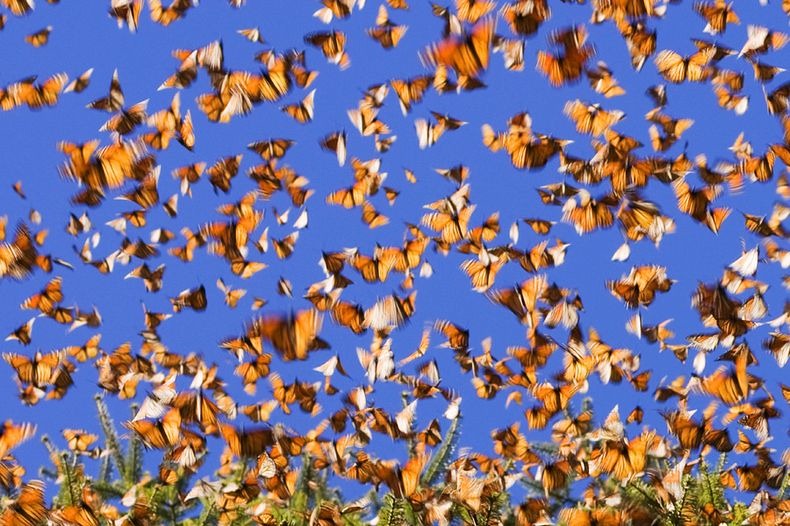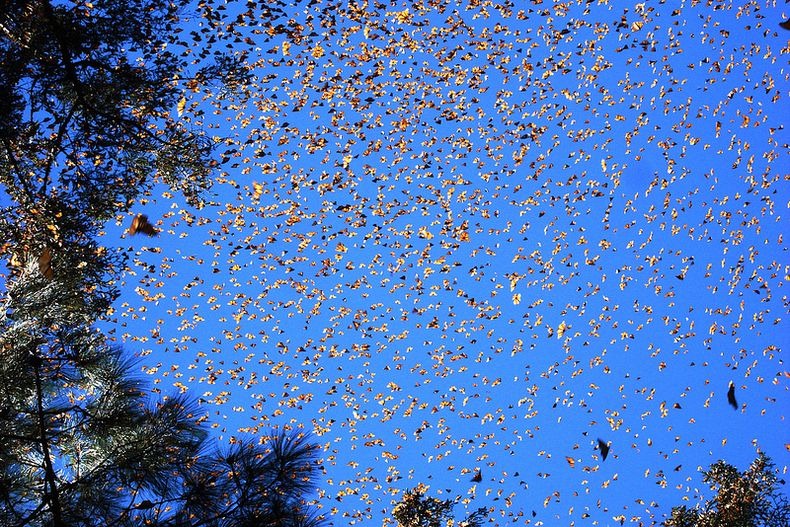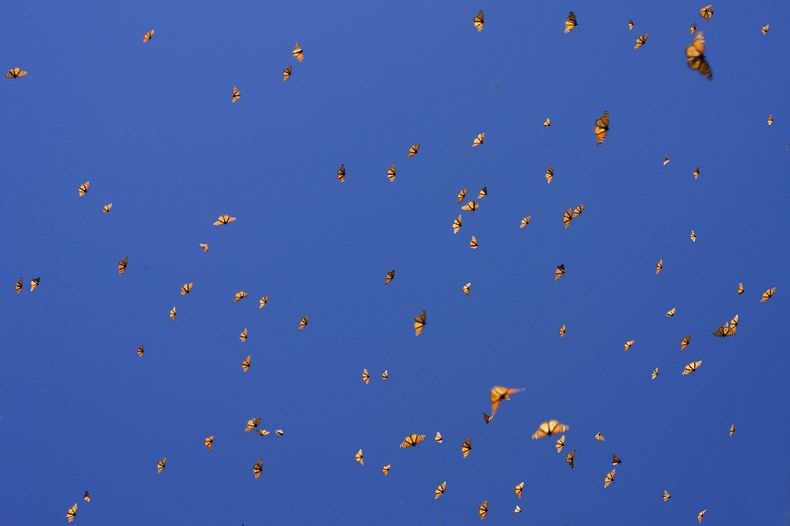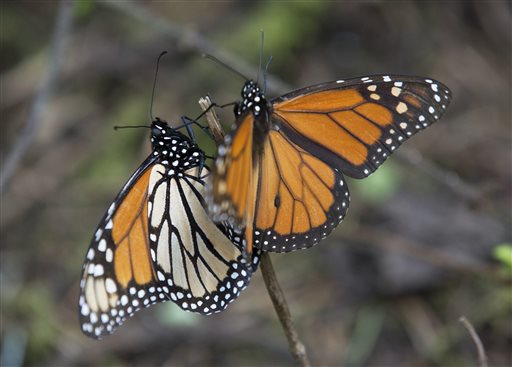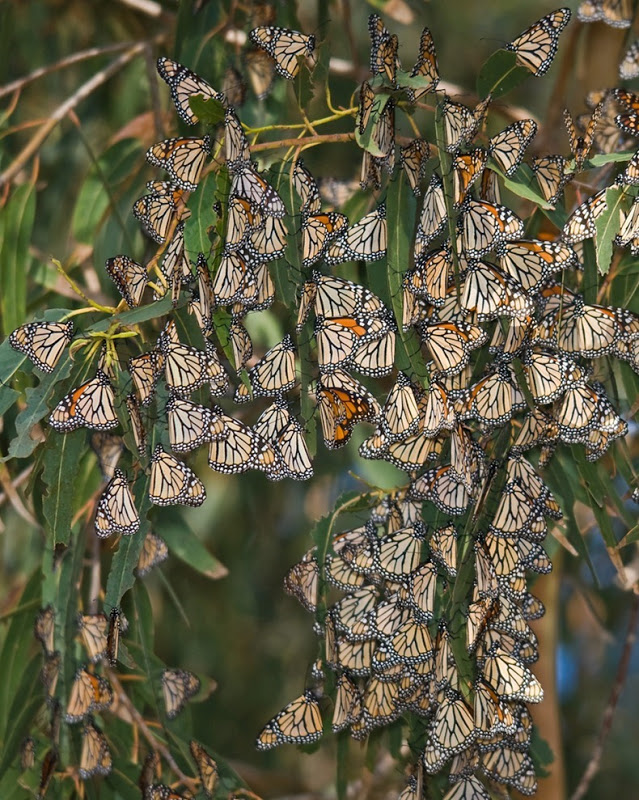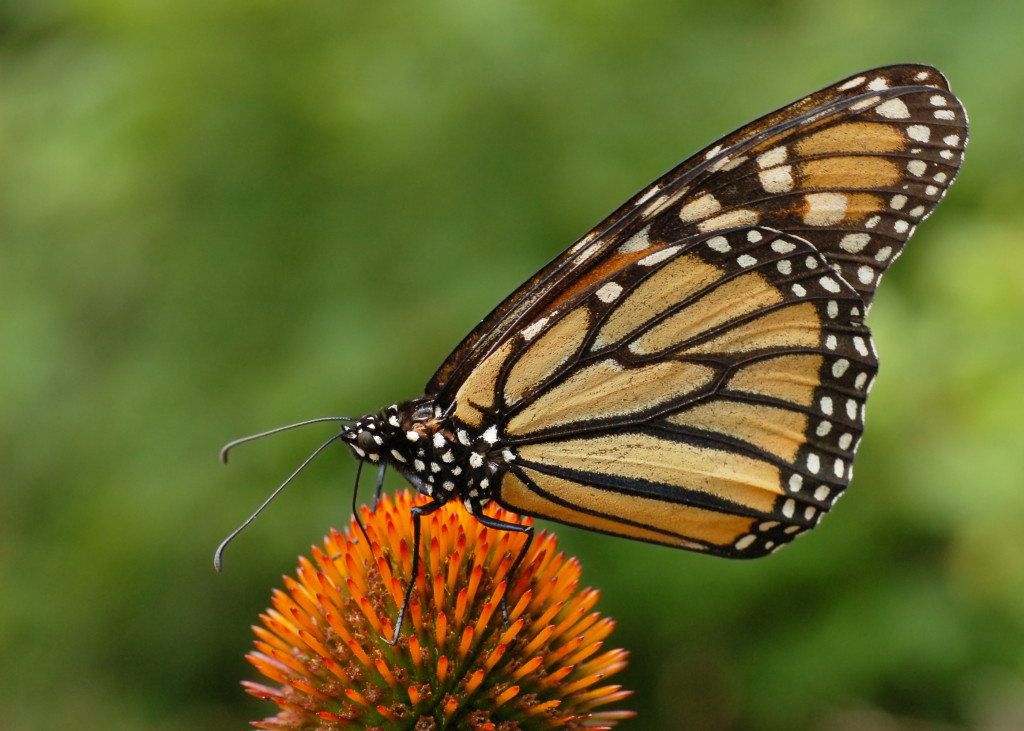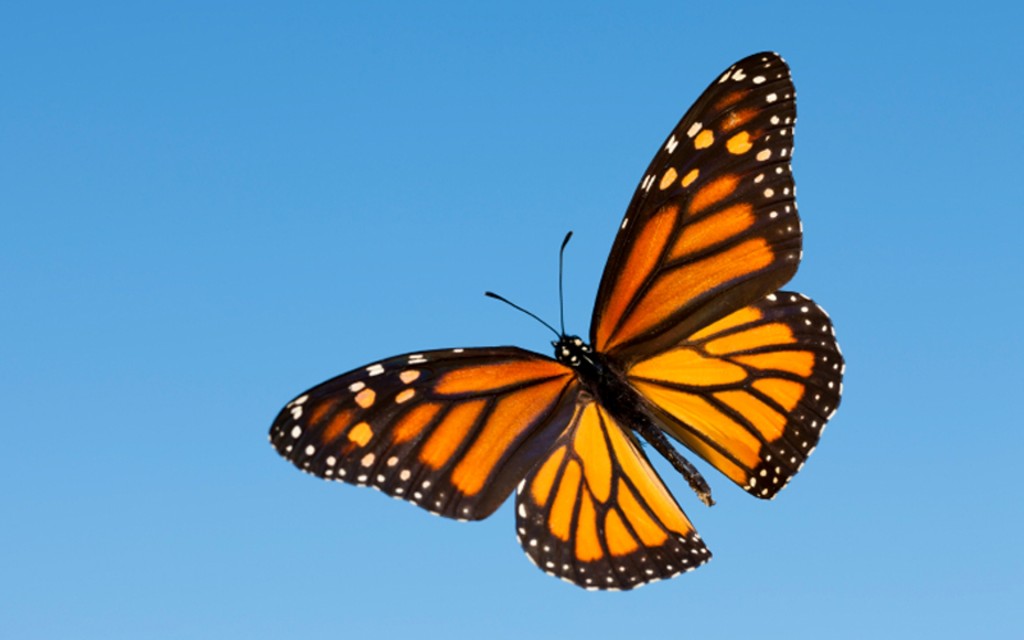The Monarch Butterfly
The Monarch butterfly lives in many parts of the world, including the Americas, Australia, Indonesia, Spain and the Canary Islands, Bermuda, Hawaii, the Cook Islands, Gibraltar, the Philippines, parts of Oceania, and in North Africa. This article is about the Monarch that lives in North America. The North American Monarch has a spectacular migration and breeding cycle.
The First Generation
There are actually several generations of monarch butterfly each year. Each spring, the first generation of monarchs hatch in the northern and eastern US states and in southern Canada- shortly after milkweed first appears in the area. The milkweed plant is the SOLE SOURCE of food for the Monarch larva (the adult butterflies consume all sorts of different things including nectar, water and even liquids from various fruits). These first generation monarchs mate, lay eggs, and die shortly after.
The Second, Third and Fourth Generations
Then there are 3 to 4 more generations, each living about eight weeks. In those two months they are born as eggs, hatch out as larva, turn into a pupa (others known as a chrysalis), then they emerge out of the pupa casing as an adult butterfly. These 3-4 generations are known as “The Summer Generations.”
The Final Generation
The final generation of the year emerges as adults at the end of the summer. They can’t stay where they are though, winter is coming and it’s too cold for them. This final generation is physiologically different from the previous ones. They emerge from the pupa in a state called “reproductive diapause.” Diapause is basically a period of suspended sexual development; these individuals do not have the mature internal sex organs (testes and ovaries) that the summer generations have. A variety of signals from nature induce this diapause condition, including the days getting shorter and changes in temperature between day and night. Even the the age of the milkweed plants these baby butterflies ate as larvae plays in role in making them have reproductive diapause!
The Journey Begins
Beginning in late August and continuing through September and October, these individuals fly up to roughly 2,000-3,000 miles south (3000-5000 km). They drink nectar and catch warm air currents that allow them to soar instead of using powered flight as they go.
If the monarch lives in the Eastern states, usually east of the Rocky Mountains, it will migrate to Mexico and hibernate in oyamel fir trees. If the monarch butterfly lives west of the Rocky Mountains, then it will hibernate in California.
Basically, East of the continental divide in North America, monarchs generally migrate to central Mexico from as far away as Ontario, Canada. Monarchs west of the divide fly to the coast of California to spend the winter.
In Mexico, monarchs find the south facing slopes of the mountains and settle on branches of oyamel fir trees. The temperature and moisture allow them to go into a torpor (very similar to hibernation, only not as deep a “sleep”). This way, they can conserve their energy until the warmer spring weather returns.
In California, migrating monarchs begin appearing along the coast in October. There are over 300 overwintering sites from south of Ensenada, Baja California, to north of San Francisco, in Sonoma County. By mid- November, most monarchs have chosen their winter homes.
Monarch butterflies use the very same trees each and every year when they migrate, which is amazing since they aren’t the same butterflies that were there last year.
Monarch butterflies are the only insect that migrates to a warmer climate that is 2,500 miles (4000 km) away each year.
Monarchs sometimes look brown when they are hibernating. This is because the underside of their wings is not the vivid orange that the tops are (the bottom side of their wings is more of a faded brown.) The butterflies are just relaxing and chilling and letting their underwings show. But they are all still quite alive!
At the end of the winter, monarchs travel another 2000-3,000 miles (3200-5000 km) back to the north. Monarch butterflies can fly in still air at a speed of around 50 kilometres (30 miles) per hour, and considerably faster with a tail wind.
Monarchs usually fly close to the ground, but have been found as high as 3,500 metres (12,000 feet). They have been known to fly more than 600 kilometres (375 miles) over water non-stop in 16 hours. Their 5,000 kilometre migration takes them eight to ten weeks, travelling only in daylight.
As they move northward, their bodies end diapause, and they become ready to mate and lay eggs once they arrive back at their northern homes where the milkweed grows. After they mate and lay eggs, they die 3 weeks later- but this is the longest living generation. These winter butterflies live 7-9 months: they survive the long southward migration, several months in Mexico or California, and then another migration back up to the north.
Their eggs then mark the start of another annual life cycle, as the first generation of monarchs is born again.
p.s. Support organic agriculture. GMO crops and the pesticides used on them harm butterflies. More info on GMOs
UPDATE: AS OF 2016 THE MONARCH POPULATION IS GROWING: Monarch Butterfly Population Rebounds to 68 Percent of 22-year Average!! https://www.biologicaldiversity.org/news/press_releases/2016/monarch-butterfly-02-26-2016.html


